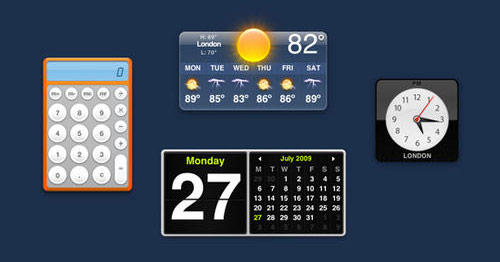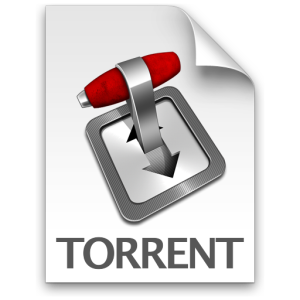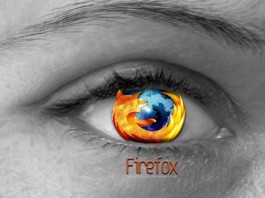I had an epiphany the other day. It happened this way. I was using Ubuntu, my Linux operating system of choice, when I found myself looking at my screen, mindlessly twirling the Compiz Fusion cube and painting fire on the screen. I was restless. And then it struck me.
After using computers for over twenty five years, I was suddenly struck by the thought that I do not know what to do with a fully functioning, uncrashable, secure and attractive operating system. For me a computer has always been a toy, something to be played with and tweaked to squeeze out every possible advantage. I have always been one to push the envelope, so crashing and messing up operating systems is rather old hat for me.
With Windows it was easy. I didn’t even have to try to break it. When I first switched to Linux, I used rpm-based distros which left me in dependency Hell in short order. Since I switched to Debian based distros even this became increasingly difficult.
Most people grimace and fuss when their computer breaks down. Not so with me. I am suddenely engaged. I have something to do. It gives me an excuse to start fresh and do what I do best, push things to extremes.
My computer should be easy to break. I have two hard drives, one SATA and one IDE. I have thirteen partitions on them with a minimum of six operating systems at any given time. Plus, I have an assortment of usb devices with even more operating systems and file systems on them. I am always installing something or other, so things are bound to go badly eventually.
Let’s start with Windows XP MCE. It came with my HP Pavilion desktop computer. My two year old computer came with two partitions and one hard drive. On the second partition is HP’s recovery program. The last time I booted into Windows XP was months ago. When I do boot into it I wonder why I bother. It takes forever to load. After which time, it insists on doing endless updates, many of which require rebooting. Ugh! I can’t wait to get back to the sanity of Linux which I am only too happy to do.
My main OS is on another partition on the SATA drive that it shares with Windows. Ubuntu is spread across three partitions, one for root (30 GB), one for home (55 GB) and 1 for swap (1 GB). I have learned over the years that it is better to use separate home and root partitions as long as you are going to install and re-install as often as I do.
My main operating system is Ubuntu which is a Linux operating system based on Debian. Ubuntu is an African word which has no English equivalent. It means that we are in this together and we all benefit when each one benefits or something to that effect. For me, it is the perfect description of community which fits in well with my philosophy.
I came to use Ubuntu shortly after it was first released. I was using another Debian distro at the time called SimplyMEPIS. They lived along side each other for a couple of years. I have used Ubuntu exclusively for about a year.
I chose Ubuntu through lots of experience with various distros. I have a box of Linux installation CDs that goes back about seven years. I have tried all of them at one time or other. My first distro was Mandrake. I stuck with that for two tortuous years. Don’t get me wrong, I liked Mandrake, but it did not like me. It was so prone to dependency problems that I was continually frustrated. Since I was relatively new to Linux, I was more easily frustrated than I am now.
During this time, I also used Fedora and Xandros. Xandros was my first Debian based distro. I liked it, but did not like its approach which was to mimic Windows. Also its repositories were limited and often out of date.
When MEPIS first came out, I gave it a try. I instantly loved it. It was just good. Everything worked just as I imagined. It was simple. It had great tools. It detected hardware that others had trouble with. I used it as my main OS until they switched it up on me. They moved to Ubuntu core. I was already using Ubuntu so this seemed redundant to me. In comparing the two side by side, I realized that I preferred Ubuntu. It was more current. It had more features and more applications. It was time to make the switch to Ubuntu, so I did.
I still have SimplyMEPIS 7.0, 64-bit version, installed on a partition. Right now I have Sabayon, openSUSE, and PCLinuxOS installed, in addition to the two already mentioned. Sabayon is a work in progress. It is a great concept. I find it refreshing, but time consuming. OpenSUSE is full featured and elegant. It is also prone to breakage. PCLinuxOS is a fork of Mandriva which for some strange reason will not install on my system. It is nostalgic so I keep it around. PCLOS works well enough, but it does not have all that I need, so I don’t take it as seriously as some people do.
Ubuntu stands apart. Sure, it is brown and orange, not my favorite colors. One of the first things I do is to change the theme. Next I add the restricted drivers and get Compiz Fusion working. I install AWN and Screenlets to complete the makeover. I install my favorite applications and add a few different desktops and I am in business. Which brings me to my current state. Everything that I could possibly want is installed and working perfectly. So what do you do with a perfectly working computer?
It turns out that you get the jump on things. You install the latest version of Ubuntu from scratch. That’s right. You start over. Hardy Heron is due for release later this month. But why wait for the inevitable rush and slow downloading? It is working well enough now for everyday use. So I installed version 8.04 and now it too is working perfectly.
You have to ask yourself if Linux is that good. For me, it is. I push things to extremes and if I can do that and Linux still works flawlessly then it has to be good. I have Hardy Heron installed with KDE 4, KDE 3, Gnome, Fluxbox, XFCE, and Sugar installed. I am using KDE 3 now, but use Gnome just as often. I switch it up just for variety. I have my bar at the top regardless of whether it is KDE or Gnome. I have AWN at the bottom. I have learned that I can have Gnome’s menu running from inside KDE using the AWN menu applet, which is cool.
I install Virtual Box for Windows compatibility. It has Windows XP installed, using and old license from my previous computer. The same VM has been kicking around for a couple of years. I just drag and drop it around wherever I go. Essentially it has every Windows program in it that I like. I prefer it to Wine. I run Virtual Box in seamless mode which gives me a Windows bar at the bottom, as well as my Ubuntu bar at the top. Yes, Windows XP and Ubuntu appear on the same screen and share the same desktop. All of window effects and cube effects still work, too.
Linux is not perfect and Ubuntu is not immune to problems. I just don’t seem to have them to the degree that other people do. So I am continually looking for something to use my computer for. I go onto the forums and help others. This reminds me that my experience is not the norm. Or is it? We may never know since people seldom post their good news.
Most people who have problems with Linux are usually trying to work around an obscure piece of hardware, most often a wireless card or external modem. They have usually inherited or pieced together an older desktop computer or laptop, which is problematic from the outset since it was likely abandoned by the previous owner for a reason. Their expectation is usually unrealistic based on what they are working with. That being said, most often the Linux community is patient, accepting and is able to get most hardware functioning, albeit in a long round about way since newbies seldom post the kind of information that could help resolve the problem quickly.
You might think that since I change my computer so much that it is no longer Ubuntu. It may not look the same, but it is pure Ubuntu at its heart. One of the things that I like about Ubuntu is that it is so flexible. It is simple enough for newbies, but complex enough for experienced users to tailor it as they choose. This is where the fun is. Computers should be personalized to our own taste. It is a workplace, a toybox and an extension of the self.
So, what do I do next? Unfortunately, Intrepid Ibex, Ubuntu 8.10, is still six months away. It is something to look forward to, but in the meantime, I need something to do. Wait a minute, I have another computer to work on in the guest room…






